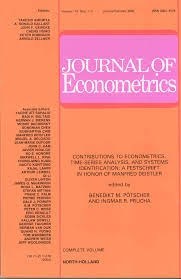
Gorgi, P., Koopman, \.J. and Schaumburg, J. (2024). Vector autoregressions with dynamic factor coefficients and conditionally heteroskedastic errors Journal of Econometrics, 244(2):1--23.
-
Affiliated authors
-
Publication year2024
-
JournalJournal of Econometrics
We introduce a new and general methodology for analyzing vector autoregressive models with time-varying coefficient matrices and conditionally heteroskedastic disturbances. The proposed approach is transparent and simple to implement. It allows the derivation of well-defined impulse response functions that rely on the overall stability of the system. We present the finite sample properties of the model in a simulation study. In an empirical illustration we investigate the possibly time-varying relationships between U.S. industrial production, inflation, and bond spread. We empirically identify a time-varying linkage between economic and financial variables which are effectively described by a common dynamic factor. The impulse response analysis identifies substantial differences in the effects of financial shocks on output and inflation during crisis and non-crisis periods. The results also illustrate how the widely-used approach of fixing the VAR coefficients in the derivation of the impulse responses leads to a sizeable underestimation of the impact of a financial shock on output and inflation during some of the crises in our sample.